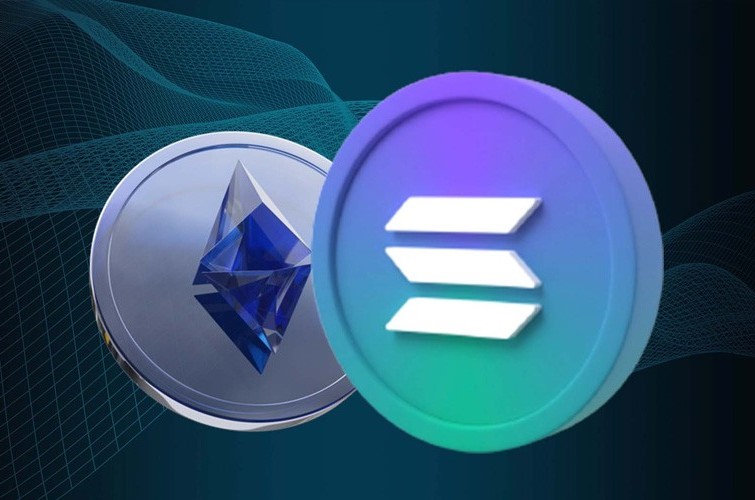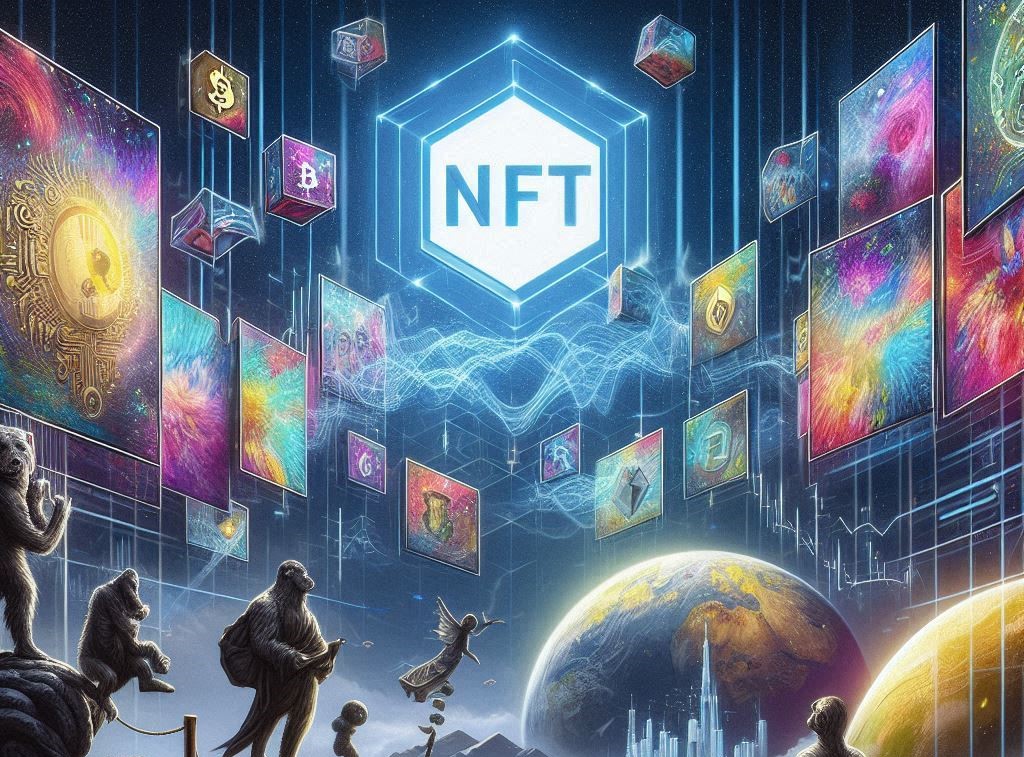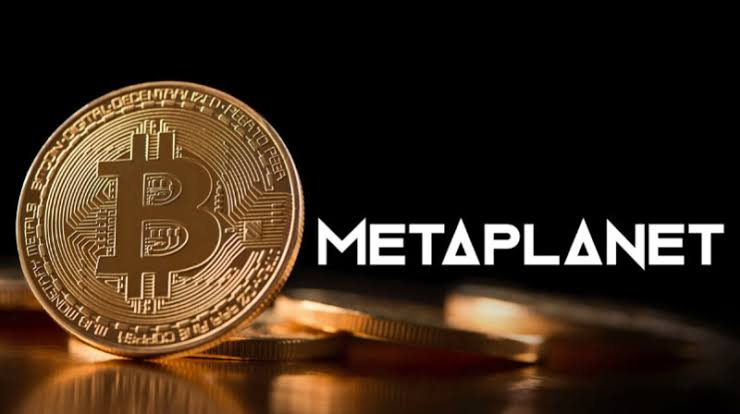Play-to-earn games have surged in popularity in recent years, reshaping the gaming landscape.
Gaming is no longer just a hobby; it has evolved into a new frontier in which players can earn monetary rewards for their time and effort. Let’s delve into what play-to-earn games are.
What are Play-to-Earn Games?
Play-to-earn games enable players to gain real-world value through in-game activities, making them a revolutionary innovation. Unlike traditional game models, in which players often pay for in-game items or memberships, P2E games reward players for their time and skill.
These rewards are frequently cryptocurrency or NFTs, both of which have actual value outside of the game. Players can trade, sell, or invest their rewards to generate new revenue while enjoying their favorite games.
Differences Between Play-to-Earn (P2E) and Traditional Games
The main difference between play-to-earn games and traditional games is based on economic dynamics and player empowerment.
While traditional gaming frequently requires users to invest money with little financial return, P2E reverses this concept, allowing players to make money while playing. Here’s a breakdown of the main differences:
| S/N | Feature | Traditional Gaming | Play-to-Earn (P2E) Gaming |
| 1 | Ownership of In-Game Assets | Controlled by game developers; assets locked in the game | Players own assets through blockchain (NFTs); assets tradeable outside the game |
| 2 | Economic Structure | Centralized economy controlled by developers | Decentralized, player-driven economy with real-world value |
| 3 | Monetization Model | Players pay to play (Pay-to-play, freemium) | Players earn rewards in cryptocurrency or NFTs while playing |
| 4 | Earning Potential | No financial return; spending is one-way | Players can earn, trade, and sell assets for real-world money |
| 5 | Integration with Real World | No integration with real-world value | Rewards and assets can be converted into real-world currency or other blockchain-based assets |
| 6 | Market Value of Assets | Limited to in-game context | Determined by the broader market and player demand, often on decentralized exchanges |
| 7 | Risk of Asset Loss | High, as assets are tied to the game’s lifecycle | Low, as assets are owned by players on the blockchain and exist independently of the game |
| 8 | Revenue Model | Game developers profit from sales and in-game purchases | Players share in the game’s economy, benefiting from their participation |
How Blockchain is Shaping the Future of Gaming
Blockchain support is critical in shaping the future of gaming; it transforms the gaming experience by ensuring decentralization, secure ownership, and transparency. Here’s how:
Decentralization:
Blockchain enables a decentralized gaming economy in which control and decision-making are dispersed across the network instead of being centralized with game developers.
The play-to-earn economy is open and transparent, with smart contracts that eliminate the possibility of manipulation by centralized entities.
The decentralized structure means that in-game assets and currency are not bound to a single game or developer, enabling players’ freedom and security.
True Ownership of In-Game Assets:
In play-to-earn games, blockchain allows players to own their in-game assets by creating non-fungible tokens (NFTs).
In-game assets are tokenized with NFTs, making sure players have true ownership.
These assets can be purchased, sold, or traded on various decentralized markets independent of the game’s ecosystem.
Players can use NFTs in numerous games that employ the same blockchain technology, resulting in interoperable assets.
Transparency and Security:
Blockchain creates a transparent, immutable ledger in which all transactions are recorded. This level of transparency ensures that all game-related transactions and awards can be publicly verified. The blockchain technology ensures:
Fairness: All players can observe the rules and logic of how rewards are allocated.
Security: The blockchain secures transactions and asset ownership, lowering the risk of hacking, fraud, and data manipulation.
Smart contracts manage the entire ecosystem by automatically enforcing rules and conditions that eliminate the need for intermediaries.
Interoperability:
Many blockchain platforms support cross-game compatibility and interoperability. For example, assets earned in one play-to-earn game may be utilized in another game that runs on the same blockchain network.
This is made attainable by using standardized token protocols such as ERC-721 and ERC-20, which make assets transferable across numerous platforms. Interoperability also enables:
Players can transfer assets across many play-to-earn games or platforms.
The development of larger, multi-game economies whereby in-game assets are valuable outside their original game.
Secure and Transparent Payments:
Blockchain enables seamless and secure transactions using cryptocurrency. In traditional games, players use fiat money (such as dollars or euros) to purchase in-game things, but payments are frequently centralized and controlled by creators.
Blockchain-powered play-to-earn games use cryptocurrency, allowing for Instant and low-cost transactions to reduce the expenses associated with traditional payment methods.
Borderless payments allow participants from all over the world to participate without worrying about currency conversions or banking limits.
Transparent rewards: Players can confirm reward distributions and transfer the proceeds (tokens or crypto) to external wallets for use outside of the game ecosystem.
Blockchain technology is the foundation of Play-to-Earn (P2E) games, establishing a decentralized, secure, and transparent economy that gives players genuine ownership of in-game assets.
Blockchain not only assures that gamers profit from their efforts, but it also creates an environment in which rewards are tangible, transferable, and interoperable across many platforms.
The Evolution of Play-to-Earn Games: From 2020–2025
Early Play-to-Earn Games Pioneers:
The Play-to-Earn games revolution started with pioneers such as Axie Infinity and Decentraland, two revolutionary blockchain-based games that laid the foundations for the P2E movement.
Axie Infinity introduced the world to play-to-earn (P2E) dynamics with its system of battling and reproducing creatures known as Axies, which players could sell or trade for real-world currency. Its success demonstrated the possibilities of combining blockchain-based NFTs and engaging gameplay.
Decentraland provided a virtual reality world in which players could purchase, sell, and trade virtual land and assets, utilizing the blockchain to secure ownership rights and allowing users to establish their own in-game businesses.
These games laid the groundwork for P2E by demonstrating how blockchain technology and NFTs might be utilized to build player-owned economies in which in-game items had tangible worth outside of the game environment.
Growth Drivers:
Several reasons contributed to the swift growth of play-to-earn games starting in 2020, fueling what is now a robust industry:
Blockchain Adoption: The adoption of blockchain technology enabled decentralized ownership and trustless ecosystems in which players held complete control over their digital assets. This eliminated the need for centralized intermediaries, allowing players to earn and sell assets securely.
NFTs: The emergence of non-fungible tokens (NFTs) introduced actual digital ownership into gaming. Players can now own unique in-game items, such as skins, weapons, or characters, which can be traded on the open market for crypto or even real-world money.
Demand for earning opportunities: With the rise of remote labor and the gig economy, gamers began to look for additional income streams, and play-to-earn games presented an attractive opportunity. Tokenized incentives and tradable in-game assets enable gamers to turn their gaming skills into real-world revenue.
The DeFi Movement: The rise of decentralized finance (DeFi) has given a financial layer to play-to-earn games, allowing players to stake, lend, or trade their earnings, further integrating gaming into the larger cryptocurrency ecosystem.
These drivers helped to change the gaming industry by including earning potential into the game experience.
2025 Vision
Play-to-earn games are expected to grow significantly in 2025, with various trends and advancements likely to impact the industry’s future:
Advanced Game Mechanics: The gaming experience in 2025 is anticipated to be more sophisticated, with improved game mechanics, graphics, and narratives. As play-to-earn games advance, creators are expected to prioritize gameplay quality over earnings potential, closing the gap between traditional AAA games and play-to-earn games.
Tokenomics: In the future, tokenomics—the economic models that control how rewards are allocated in play-to-earn games (P2E) will become more robust and sustainable. Expect to see more multi-token systems that balance in-game currency with governance tokens in order to develop sustainable in-game economies.
Player Ecosystems: By 2025, the P2E ecosystem is projected to include guilds, DAOs (decentralized autonomous organizations), and community-driven economies. Players will not only receive in-game benefits but will also have the opportunity to influence the future of these play-to-earn games through voting systems and governance tokens.
Interoperability: One of the major shifts by 2025 could be the ability for players to transfer assets between different games and virtual worlds seamlessly. Blockchain-powered interoperability allows a player’s in-game assets to exist across numerous gaming platforms, boosting the usability and value of digital products.
Mainstream Adoption: By 2025, mainstream gamers are anticipated to enjoy play-to-earn games, expanding beyond the specialized cryptocurrency community. As more traditional gaming firms incorporate blockchain technology, P2E dynamics will become the norm in many games.
The path of Play-to-Earn games from 2020 to 2025 represents a fundamental change in the gaming industry.
What began as an experimental concept has grown into a multibillion-dollar industry that is expected to grow much further as blockchain technology, NFTs, and tokenized economies continue to transform the way we play and earn.
Top Play-to-Earn (P2E) Games to Watch in 2025
Axie Infinity
Axie Infinity has been a successful pioneer in the Play-to-Earn (P2E) gaming market. Players capture and battle Axies, which are NFT creatures that may be bred, traded, and sold on the open market.
The Ronin sidechain is used in the game to allow for low-cost and rapid transactions. Axie Infinity, with its unique gameplay loop and extensive integration with blockchain technology, established the standard for how P2E can combine fun and financial rewards.
2025 Vision:
Axie Infinity is set to undergo major upgrades by 2025. With more game types, greater player rewards, and a thriving community-driven economy, the game’s tokenomics model is expected to evolve even further.
The addition of land gameplay in which players can build and develop their own plots in the Axie universe is expected to broaden in-game potentials, making it one of the most intriguing initiatives to continue dominating the P2E landscape.
Scalability and cross-chain interoperability are likely to improve as the community and developer base grows.
The Sandbox
The Sandbox is a virtual metaverse that allows players to develop, build, and trade NFT-based products. Its highly interactive environment enables users to create unique products such as games, buildings, and experiences, promoting a creator economy based on the SAND token.
This metaverse platform combines creativity with the peer-to-peer approach, enabling players to monetize their digital contributions in a decentralized marketplace.
2025 Vision:
By 2025, The Sandbox is anticipated to make significant progress in metaverse integration. As the concept of virtual worlds gains popularity, The Sandbox will most likely include features that are interoperable with other virtual worlds and metaverses.
Partnerships with brands and cooperation with other blockchain initiatives will strengthen the ecosystem and propel its decentralized model to new heights. Developers intend to improve in-game mechanics and user-generated content tools, making it easier for gamers to develop and monetize digital material.
Star Atlas
Star Atlas is a graphically spectacular, space-themed adventure game that combines blockchain technology with immersive gameplay. Players can explore worlds, mine resources, fight in wars, and create vast empires while collecting crypto rewards.
NFTs in Star Atlas represent spaceships, land, and other valuable commodities, which players can exchange on the game’s decentralized marketplace.
2025 Vision:
By 2025, Star Atlas aims to revolutionize space exploration gaming using blockchain connections. The game’s space economy is expected to improve, allowing players to build large civilizations and ecosystems on many worlds.
With a greater emphasis on cosmic trade and joint missions, Star Atlas will continue to entice players who value the combination of strategic gameplay and financial incentives. Expect increased cross-game capability and stronger connectivity with other blockchain ecosystems.
Illuvium
Illuvium is a fantasy RPG that combines collectible creature battles with open-world exploring. Players can collect Illuvials, which are unique NFTs and valuable in-game items.
The game’s focus on high-quality graphics and strategic gameplay has established it as a viable contender in the play-to-earn sector, providing both entertainment and financial rewards via a decentralized marketplace.
2025 Vision:
Illuvium’s vision for 2025 includes extending open-world exploring and improving cross-game interactions. The game’s basic appeal will remain its battle mechanisms, which allow players to win prizes in the form of tokens and NFTs.
With its deep gameplay and aspirations for compatibility with other blockchain projects, Illuvium is expected to emerge as a platform where digital collectibles have a broader utility both inside and outside of games.
Big Time
Big Time is a multiplayer action RPG where players can fight monsters, explore dungeons, and earn NFTs. The game is designed to be fast-paced, with real-time fighting features and an emphasis on accumulating in-game objects that can be traded on a blockchain-powered marketplace.
Players can design their characters, go on epic missions, and join guilds to help drive the game’s community-focused feature.
2025 Vision:
By 2025, Big Time plans to expand its in-game economies through partnerships with other blockchain projects, perhaps enabling cross-game transaction opportunities. The game’s developers plan to improve scalability and offer more advanced multiplayer mechanics to enable bigger player populations.
Big Time is also expected to improve its connection with decentralized finance (DeFi), allowing players to stake or lend their in-game assets for additional rewards, further combining gaming and blockchain-based financial systems.
Each of these peer-to-peer games represents the future of gaming in 2025, where blockchain technology will power decentralized economies and allow players to earn real-world currency through immersive and entertaining gameplay.
The evolving development of these platforms will change the way players interact with virtual worlds and assets, paving the way for a fully tokenized and player-driven gaming ecosystem.
The Role of NFTs in Play-to-Earn Games
The role of NFTs in play-to-earn games is as follows:
NFTs as In-Game Assets
Non-fungible tokens (NFTs) have transformed play-to-earn (P2E) games by allowing users to possess unique in-game assets. These can include everything from characters and weapons to cosmetics like skins, all of which are recorded as NFTs on the blockchain.
Unlike traditional games, where players have no claim to their digital assets outside the game’s servers, NFTs allow for actual ownership. Players can purchase, sell, or trade these assets in open marketplaces, generating real-world value from their in-game efforts.
For instance, in games like Axie Infinity or The Sandbox, players can obtain rare NFTs that increase in value, giving an investing opportunity to gaming.
The ownership of NFTs transforms gaming into an economically rewarding activity, making P2E an appealing model that encourages players to participate extensively in the game.
Interoperability Between Games
One of the most fascinating characteristics of NFTs in (P2E) games is their capacity to interoperate. Because of blockchain technology, these assets are no longer limited to a particular game.
Players can transfer NFTs between games that use the same or compatible blockchain networks, resulting in cross-game economies. For example, a player from The Sandbox may use an NFT character from another game in the same metaverse, allowing them to transfer their assets across virtual worlds.
This amount of adaptability empowers players and promotes innovation in game development. As games become more networked, players can get more control over their digital assets, which they may use across a broader ecosystem, increasing the value of their NFTs.
Future of NFTs in P2E by 2025
Looking forward to 2025, NFTs’ importance in play-to-earn games is projected to grow as new innovations emerge.
Evolving token standards, such as ERC-721 and ERC-1155, are expected to improve NFT functionality, allowing for more sophisticated asset structures and interactivity. Future NFTs, for example, could evolve in value or capability as a player’s in-game achievements progress, making them more dynamic.
Furthermore, expect more seamless integration of NFTs with decentralized finance (DeFi) protocols. Players can stake their NFTs to receive incentives or use them as collateral for loans, combining the worlds of gaming and finance.
As blockchain ecosystems expand, NFTs will become an increasingly more important aspect of the P2E experience, with richer tokenomics and greater player participation.
Let’s delve into the challenges facing Play-to-Earn (P2E) games
Challenges for Play-to-Earn Games in 2025
The Sustainability of Play-to-Earn Models:
As Play-to-Earn (P2E) games gain popularity, one of the main challenges is ensuring the long-term viability of their economic models. Many play-to-earn games rely on new player influxes to preserve economic balance, as new players bring in capital to support the in-game economy.
However, this method risks creating a situation in which early adopters gain more while newer players suffer rising costs or declining returns. Maintaining balanced ecosystems in which rewards keep value without pricing out new players is a difficult task.
To combat this, play-to-earn games are exploring more sustainable tokenomics, such as implementing reward caps or designing better incentive systems that link in-game payouts to skill rather than amount of participation.
By 2025, the goal will be to ensure that these economies can evolve without disrupting their user base or repelling new entrants.
Regulatory uncertainty
The regulatory environment surrounding crypto and blockchain technology remains unstable, causing doubt about the future of play-to-earn games. As governments across the world continue to define their stance on digital assets, sterner regulations may have an impact on the P2E economy.
For example, regulations governing token usage, NFT sales, and even the earnings that players can withdraw from in-game economies could all have a direct impact on P2E platforms.
By 2025, the P2E sector is anticipated to encounter heightened regulatory scrutiny, and game developers will be required to ensure compliance with a developing web of regional and international regulations.
Navigating these problems while retaining decentralized and player-driven economies could have a huge impact on the future of P2E gaming.
Barriers to Entry
Another issue affecting the P2E industry is the high entrance cost for popular games. For example, games like Axie Infinity demand a considerable upfront payment to purchase in-game NFTs, limiting participation to those who can afford it.
This provides a hurdle for potential players, especially in areas where income levels might not cover such expenses.
By 2025, Play-to-earn games will need to discover ways to reduce entrance prices, such as free-to-play models with incremental earning mechanisms, loan services for in-game goods, or more inclusive incentive systems. Addressing these barriers will be critical to the widespread adoption of play-to-earn games.
These challenges, which include economic sustainability, regulatory uncertainty, and barriers to entry, show the obstacles that play-to-earn games must overcome by 2025.
Developers are working to build robust systems that can adapt to a growing and evolving user base, ensuring that Play-to-Earn thrives in the gaming environment.
Conclusion
Play-to-earn games have developed as a revolutionary force in the gaming industry, changing the way players interact with digital environments.
Unlike traditional gaming models, in which players devote time and money with no financial return, play-to-earn games provide players the opportunity to earn real-world benefits, frequently in the form of cryptocurrencies or NFTs.
The future of gaming is changing, and play-to-earn games are at the heart of this shift. As we approach 2025, Play-to-earn games will continue to evolve, resulting in more engaging, rewarding, and decentralized experiences.



